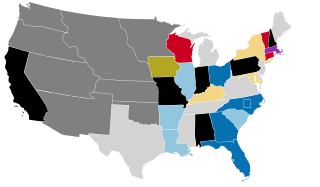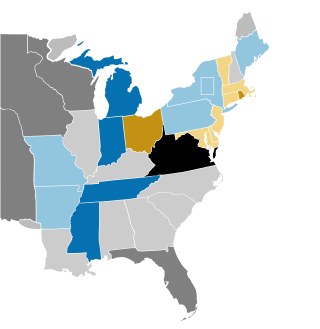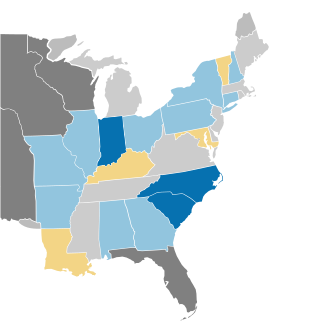| Committee | Democratic members | Whig members |
|---|
| Privileges and Elections | Joel B. McFarland, James P. Henderson, [lower-alpha 1] John C. Clark | David Chambers, John P. Converse |
| Unfinished Business | George W. Baird, Richard W. Cahill, David McConnell | Isaac Houseman, John P. Converse |
| Judiciary | Le Grand Byington, Caleb J. McNulty, Elihu Johnson | John Probasco, Thomas M. Kelley |
| Finance | Joel B. McFarland, Henry C. Brish, John Larwill | Thomas Earl, Isaac Atkinson |
| Banks and the Currency | Edson B. Olds, George W. Sharp, Le Grand Byington, Archibald Gordon | Nathaniel Dike |
| Public Works | Jesse Meredith, Gilman C. Mudgett, Wilson Nelson | Hiram Campbell, David Chambers |
| Common Schools, Colleges and Universities | Henry C. Brish, Isaac Green, Isaac E. James | Otway Curry, Simeon Fuller |
| Medical Colleges and Medical Societies | James P. Henderson, [lower-alpha 1] John C. Clark, Phelps Humphrey | J. B. Ackley, Charles Bowen |
| Roads and Highways | Cornelius Okey, John Martin, William Wakefield | Joseph Chenowith, Amos Seward |
| Public Lands | Caleb J. McNulty, Jesse Meredith, James B. Steedman | David Fisher, John McClure |
| Agriculture and Manufactures | Israel Brown, Joseph Wilford, William Douglass | Newton Larsh, Nathan Webb |
| Claims | John Larwill, Gilman C. Mudgett, Moses Rees | David Chambers, Amos Seward |
| The Militia | Jesse Meredith, George W. Sharp, John D. White | Thomas Earl, Robert Robinson |
| The National Road | Isaac Green, William McClung, Thomas Pilcher | John M. Gallagher, John Fudge |
| Rail Roads | David McConnell, Richard W. Cahill, George W. Baird | William B. McCrea. John P. Converse |
| New Counties | James B. King, Daniel Kelley, James Kilgore | Jacob H. Baldwin, Robert Robinson |
| The Library | Thomas Pilcher, Phelps Humphrey, John Reid | George W. Woodbridge, Otway Curry |
| Public Buildings | Daniel Kelly, Rudolphus Martin, John D. White | John Probasco, Jacob Counts |
| Public Institutions | John C. Clark, Nicholas Spindlar, Richard Warner | Jonathan Tuttle, Thomas Ross |
| Corporations | Elihu Johnson, Richard Warner, James Kilgore | Robert C. Schenck, Thomas Ross |
| The Penitentiary | William McClung, John Reid, [lower-alpha 2] Cornelius Okey | Charles Bowen, Samuel H. Pardee |
| Public Printing | James B. Steedman, John Gruber, Rudolphus Martin | George W. Woodbridge, John A. Smith |
| The Public Debt | James P. Henderson, [lower-alpha 1] John Gruber, Edson B. Olds | Robert C. Schenck, Samuel Atherton |
| Enrollment | Gilman C. Mudgett | John M. Gallagher |















